As healthcare providers, fostering healthcare cost transparency and effectively communicating estimated encounter amounts is not just a regulatory consideration, it is a crucial element in building trust and empowering patients to make informed decisions about their care and patient financial responsibility. This blog post explores best practices for discussing patient cost estimation with empathy and clarity.
The financial aspect of healthcare can be a source of anxiety and confusion for many. Providing clear and timely information about medical costs upfront can significantly alleviate this burden and improve the overall patient experience. By implementing effective strategies for communicating estimated healthcare costs, healthcare organizations can enhance patient satisfaction, reduce billing inquiries, and improve revenue cycle management.
Here are some best practices for communicating estimated costs to patients:
Initiate Cost Discussions Early
Open and honest conversations about estimated medical expenses should begin as early as possible in the patient journey. Ideally, this occurs before services are rendered, perhaps during scheduling or initial consultations. Proactive communication about potential out-of-pocket costs, including deductibles, copayments, and coinsurance, sets realistic expectations and allows patients time to understand their patient financial responsibility and to explore payment options. Integrating patient cost estimation into your standard pre-service protocols demonstrates a commitment to transparency.
Provide Clear and Detailed Estimates
Vague estimations can be more frustrating than no estimation at all. Patient cost estimation should be as accurate as possible, providing a detailed breakdown of anticipated charges for specific procedures, tests, or visits. This detail helps patients understand what they are being charged for and how their insurance coverage might apply. Clearly outlining what the estimate includes and excludes (e.g., physician fees, facility fees, anesthesia) is vital. Utilizing price transparency tools and providing written estimates can reinforce verbal discussions and serve as a helpful reference for patients navigating their medical bills.
Utilize Compassionate and Reassuring Communication
Discussing finances can be a sensitive topic. Training staff to approach these conversations with empathy, patience, and understanding is paramount. Acknowledge the potential stress associated with healthcare costs and be prepared to answer questions in a clear and accessible manner. Avoid medical jargon and explain financial terms simply. Reassure patients that you are there to help them understand their financial obligations and explore available options. Compassionate communication builds rapport and trust, making challenging conversations more productive.
Incorporate Cost Discussions into Routine Workflow
Financial discussions should not be an afterthought but an integrated part of the patient care workflow. This could involve incorporating cost estimation into pre-registration processes, utilizing dedicated financial counselors, or providing readily accessible information online and in waiting areas. Making healthcare cost transparency a routine part of operations normalizes the conversation and guarantees that patients receive necessary information consistently.
Offer Flexible Payment Options
Even with clear estimations, the cost of healthcare can be a significant financial burden. Offering a range of flexible payment options, such as payment plans, financing options, or information about financial assistance programs, demonstrates a commitment to helping patients manage their medical expenses. Proactively discussing these options can alleviate patient anxiety and improve the likelihood of timely payment, positively impacting revenue cycle management.
Transparent and Accessible Communication Channels are Critical
Patients should have easy access to information about estimated encounter amounts and patient financial responsibility. This includes clearly signposted sections on your website regarding billing and insurance, dedicated phone lines for billing inquiries, and accessible in-person support. Make sure that the information provided is consistent across all channels and easily understood by individuals with varying levels of health literacy. Medical cost transparency is most effective when information is readily available and easy to navigate.
Educate Patients on Financial Policies and Resources
Beyond providing estimates for a specific encounter, educate patients about your practice’s financial policies, billing procedures, and available financial resources. This can include information about how insurance benefits are applied, the process for appealing denied claims, and resources for understanding healthcare finance and medical billing. Empowering patients with knowledge about these processes can help them navigate the financial aspects of their healthcare more effectively.
Conclusion
Effectively communicating estimated encounter amounts with empathy and transparency is a cornerstone of patient-centered care and sound revenue cycle management. By implementing these best practices, healthcare providers can build stronger patient relationships, reduce financial stress for patients, and improve the overall financial health of their organization. Prioritizing healthcare cost transparency is an investment in patient trust and a more positive healthcare experience for everyone.
For more information on how efficient patient statement services can support your practice in communicating financial information clearly and empathetically, visit our patient statement services.


